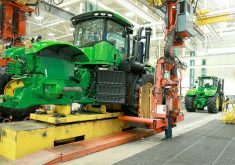Calves in purebred herds are making their early-in-the year appearance now, and their commercial herd counterparts won’t be far behind.
There’s nothing quite like the sight of a newborn calf, with its long eyelashes, fuzzy baby face and white markings whiter than they will ever be again. Its hoofs are soft and waxy, tattered after its first steps but hardened within days.
The newborns stand awkwardly, with their big knobby knees, and jump around stiffly when sunshine strikes the straw, tails up like flags.
Read Also

Finding the sweet spot where ag science meets ag culture
Soon, many will look at practices such as seeding marginal acres to forage, growing cover crops and livestock integration and ask why they didn’t do this sooner.
Their hair feels stiff on the surface but softer near the skin, and softer still as time and tongue baths accumulate. When they stretch after rising from a nap, you can almost feel it in your own bones.
Newborn calves are brazen yet shy, playful yet uncertain, cute yet a trial to their mothers and often their handlers. Some seem like they don’t want to be born. Some refuse to suck. Some are just plain dopey.
Still producers carry on raising them, even though today’s cow-calf economics yield few monetary rewards.
As you’ll read in the livestock section on pages 64-65, the calves pictured here – and all the others that will hit the ground this spring – have DNA that can be traced back through thousands of generations.
Tribes, peasants, nomads, graziers and ranchers have developed breeds over millions of years to nurture desirable traits and improve production.
Yet even with all that genetic history and accumulated experience, profits today seem hard to come by. Vicarious joy felt as they watch calves gamboling in the pasture is not enough on some days – most days – to maintain cattle producers’ motivation. There has to be enough profit to make it worthwhile. Who has the answers that will make that come about?















